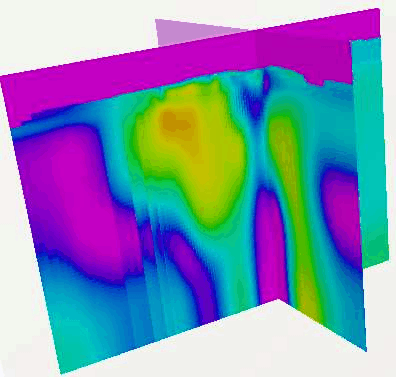|
|
|
|
Seismic tomography with co-located soft data |
We have reviewed the issues involved in solving a typical seismic tomography problem and how we can address some of them by introduction of additional information. We also discussed our motivations for using the cross-gradient function to incorporate this additional information. The preliminary sensitivity analysis on two synthetic velocity models shows that the cross-gradient functions are a potential tool to integrate different types of geophysical data into the tomography problem. Finally, the comparison between estimated velocities by use of steering filters and cross-gradients functions suggest that we may use these two types of constraints to resolve more general cases of velocity models, including sharp boundaries and smooth anomalies.
This method may lead to improved subsurface interpretations in regions mapped using more than one geophysical method. Figures 5(a) and 5(b) show a CMP gather of seismic data from a marine field dataset and co-located inverted MT resistivity data, respectively. We hope to improve the velocity estimations given by the seismic data itself by including the co-located smooth resistivity map in the tomography problem. Note that the frequency contents of seismic and resistivity data are different, and the resistivity field provides only a low frequency estimation of the subsurface structure. However, we hope to enforce a reasonable geological structure on the output of the seismic tomography problem by using this smooth image as the constraint.


|
|---|
|
wg-cmp2,wg-resist2
Figure 5. Field data provided by WesternGeco company: (a) a seismic CMP gather from field data and (b) The inverted resistivity map from the MT survey. [NR] |
|
|
This method can be extended to seismic tomography constrained by training images, where we can also aim for different realizations of the velocity model by altering the co-located data or training image.
|
|
|
|
Seismic tomography with co-located soft data |